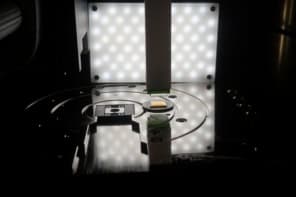
The team operating the Large Hadron Collider (LHC) at the CERN lab near Geneva is standing firm against its biggest setback in months while admitting that it might be forced to replace several superconducting magnets.
On Friday, physicsworld.com revealed that a huge warm-up or “quench” in one of the eight sectors of magnets caused about one tonne — some 8000 litres — of liquid helium to evaporate rapidly into the LHC’s tunnel. At the time the team had been increasing the energy of the machine from 450 GeV — the energy with which proton bunches are injected from Super Proton Synchrotron, the last in CERN’s accelerator chain — to 5 TeV.
The team now believes that the quench was a side-effect of a faulty electrical connection that melted at high current. Although the quench is not a big issue, the sector containing the fault will have to be warmed up to enable repairs, and then slowly cooled back again to its operating temperature of 1.9 K.
“We may have to exchange more magnets,” LHC project leader Lyn Evans told physicsworld.com in an e-mail. “[But] we have spares.”
“The mood at CERN is not joyful,” he continued. “However, we have had to face up to problems in the past and we will do it again. Teams are being organized to make the repair as quickly as we can.”
The problem now looks likely to set back the commissioning schedule by around two months. “A full investigation is underway, but it is already clear that the sector will have to be warmed up for repairs to take place,” CERN spokesperson James Gillies wrote in a statement over the weekend. “This implies a minimum of two months downtime for LHC operation.”
The rocky road of commissioning
Last week’s electrical fault is the second the LHC has suffered since the highly successful “switch on” on 10 September, when the operations team managed to circulate proton beams in both directions around the 27 km-long tunnel. Late on 12 September — as first revealed on the physicsworld.com blog — a short-circuit demanded the replacement of a mammoth 30 tonne transformer.
The latest problem, aside from being a blow to morale, will probably scupper the plans to have useable data pouring out of the LHC in time for 21 October, when various heads of state will travel to CERN for an official inauguration.
Presently the team still hopes to “train” the magnets to handle beams at the full energy of 7 TeV during the winter, when the LHC is shut down. However, there is a worry that, upon warming the sector, the team could find the problem is worse than they had expected.



